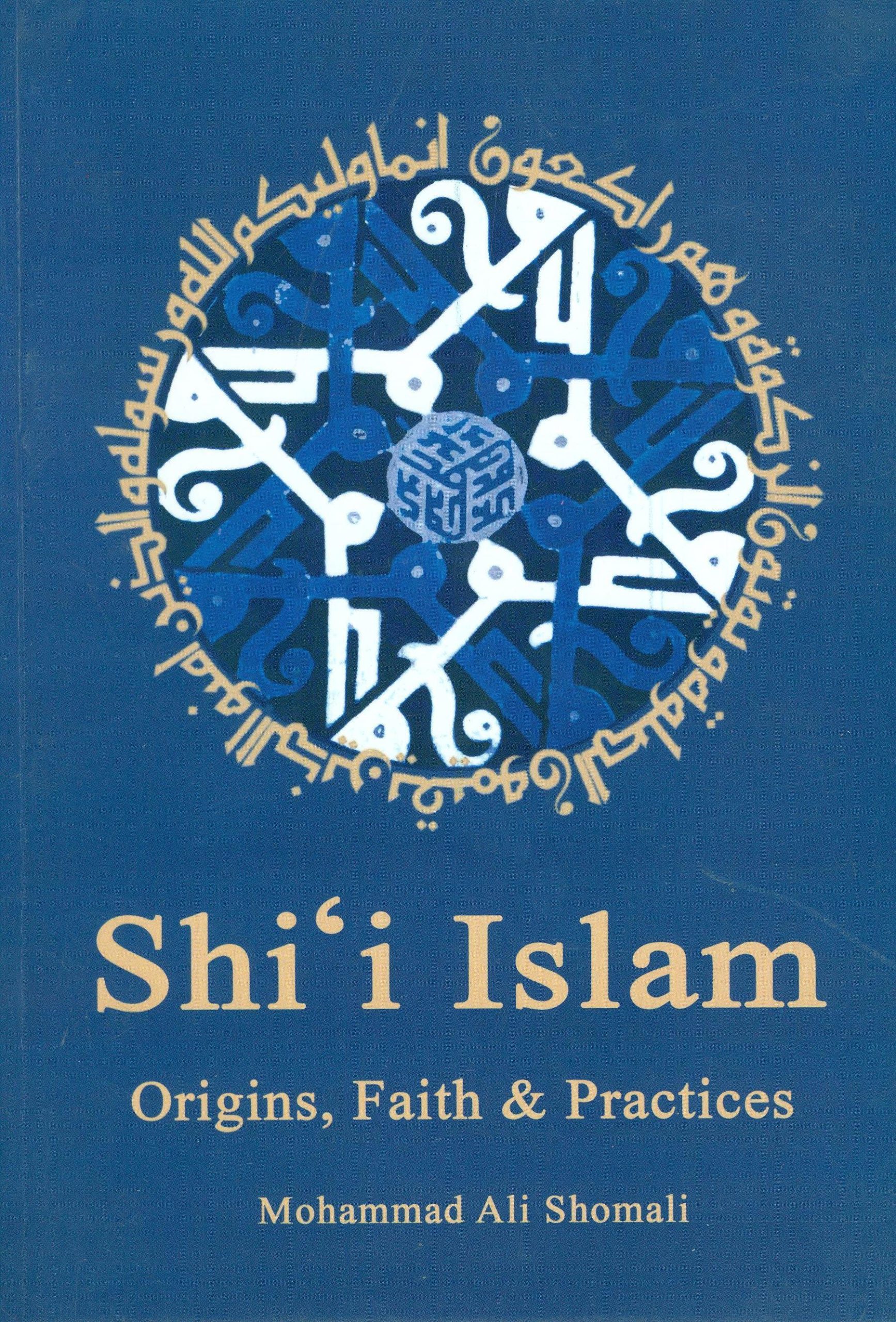Mohammad Ali Shomali, Shi’i Islam: Origins, Faith, and Practices, London: ICAS and International Institute for Islamic Studies, 2003. 176 pp.
![]() There have been several books that provide brief and basic information regarding Shii Islam, hence the book under review is just one of them. Within its six chapters, the book attempts to give a portrayal of Shii Islam. Its Chapter One provides information about the origins of Shiism plus the meaning of the Arabic term “Shīʽah” and how it gained momentum. It also explores the early Shi’a community and its development and spread from Arabia into other adjoining regions, e.g., Iraq, Iran, and the Levant. Chapter Two explores the major sources of Shia thoughts and laws. They include the Holy Quran, the intact Divine book; the Sunnah, i.e., the words and conducts of the Infallibles, starting from the Prophet Muhammad down through to the 12th Infallible Imam al-Mahdi; the reason or the intellect, and the consensus of the leading Muslim experts and theologians.
There have been several books that provide brief and basic information regarding Shii Islam, hence the book under review is just one of them. Within its six chapters, the book attempts to give a portrayal of Shii Islam. Its Chapter One provides information about the origins of Shiism plus the meaning of the Arabic term “Shīʽah” and how it gained momentum. It also explores the early Shi’a community and its development and spread from Arabia into other adjoining regions, e.g., Iraq, Iran, and the Levant. Chapter Two explores the major sources of Shia thoughts and laws. They include the Holy Quran, the intact Divine book; the Sunnah, i.e., the words and conducts of the Infallibles, starting from the Prophet Muhammad down through to the 12th Infallible Imam al-Mahdi; the reason or the intellect, and the consensus of the leading Muslim experts and theologians.
Chapter Three is devoted to the doctrines that play a decisive role in defining the intellectual territories of the Shia communities. This chapter renders a brief description of Islam, the principles of religion, Shia doctrines, Infallibility, and the doctrine of al-Mahdi, the end-of-the-world universal savior. As the doctrine of infallibility plays a decisive role in Shii doctrines and its conceptions of Islam and imamate, it has received special attention.
 Chapter Four focuses on the main ritual practices. Here daily salats are explained and then Ramadan mandatory fasting is explained, with its conditions and terms. As pilgrimage (the hajj) to Mecca is mandatory for those who are capable of affording it, it is another topic discussed and explained. The rest of the practices elaborated concern paying financial alms to the needy, struggling (i.e., jihad) in the cause of God, and enjoining the good and prohibiting evil or abominable practices. For each of them, the right conditions are explained, all based on canonical Shii outlooks.
Chapter Four focuses on the main ritual practices. Here daily salats are explained and then Ramadan mandatory fasting is explained, with its conditions and terms. As pilgrimage (the hajj) to Mecca is mandatory for those who are capable of affording it, it is another topic discussed and explained. The rest of the practices elaborated concern paying financial alms to the needy, struggling (i.e., jihad) in the cause of God, and enjoining the good and prohibiting evil or abominable practices. For each of them, the right conditions are explained, all based on canonical Shii outlooks.
Chapter Five attempts to move to the more theoretical levers. Here the topics dealt with concern spirituality, rationality, and constant search for the truth. As the general tendency in Shii Islam has more leaning towards rationality, hence more reason-oriented attitudes and outcomes are more evident throughout Shii history.
The last chapter of the book is a demographic survey of major Shii populations over the globe. Apart from the Shii heartlands in Iran and Iraq where sacred Shii shrines are located, there are many other regions where Shiis can be found, e.g., in the Indian subcontinent and certain parts of Africa.
The moderate-size bibliography provides more impetus for the readership who may wish to explore more. The book is a reliable source, as it sheds light on the nature and historical significance of Shia Islam.
Muhammad-Reza Fakhr-Rohani
University of Qum,
Iran
